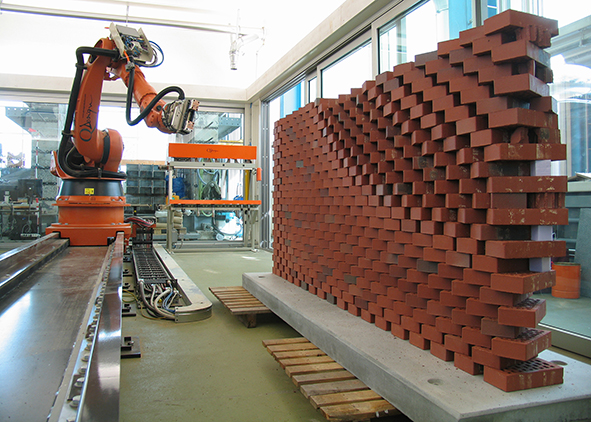Industry 4.0: building and the new training demand
DOI:
https://doi.org/10.19229/2464-9309/352018Keywords:
industry 4.0, digitalization, didactic experimentation, building technology, competence centerAbstract
A comparison between Schools of Architecture requires a preliminary analysis of the political, economic and social contexts within which systems, education and projects are placed. An analysis is necessary to evaluate suitable educational experiments, such as the one presented here in the fields of Architectural Technology, particularly attentive to the quality of the project, to the essential understanding of the construction sector’s transition to Industry 4.0 and the new needs expressed by society. The first positive results outline possible paths that could be hoped for with a greater and more adequate availability of resources to Universities.
Downloads
Article Metrics Graph
References
ANCE (2017), Osservatorio Congiunturale sull’industria delle costruzioni, Gennaio. [Online] Available at: www.ance.it [Accessed 10 April 2018].
Censis (2017), Rapporto sulla situazione sociale del paese, FrancoAngeli, Milano.
Ciribini, A. L. C. (2017), Il Piano Nazionale per l’Ambiente Costruito Digitalizzato. [Online] Available at: www.ingenio-web.it/6854-il-piano-nazionale-perlambiente-costruito-digitalizzato [Accessed 10 June 2017].
Decreto Legislativo 18 aprile 2016, n. 50 sugli appalti pubblici, G.U. Serie Generale n. 91 del 19-04-2016, Suppl. Ordinario n. 10.
Kahn, L. (1999, II ed.), Conversations with Students, Architecture at Rice 26, Princeton Architectural Press.
Mise (2016), Piano nazionale industria 4.0. [Online] Available at: www.sviluppoeconomico.gov.it/index.php/it/industria40 [Accessed 6 March 2018].
OECD (2017), PISA 2015 Results (Volume III): Students’ Well-Being, PISA, OECD Publishing, Paris. [Online] Available at: dx.doi.org/10.1787/9789264273856-en [Accessed 6 March 2018].
Schwab, K. (2016), La quarta rivoluzione industriale, FrancoAngeli, Milano.
Sferra, A. S. (2017), Processo Edilizio & Sostenibilità Ambientale – Comunicare con la didattica, FrancoAngeli, Milano.

Downloads
Published
How to Cite
Issue
Section
License
This Journal is published under Creative Commons Attribution Licence 4.0 (CC-BY).
License scheme | Legal code
This License allows anyone to:
Share: copy and redistribute the material in any medium or format.
Adapt: remix, transform, and build upon the material for any purpose, even commercially.
Under the following terms
Attribution: Users must give appropriate credit, provide a link to the license, and indicate if changes were made; users may do so in any reasonable manner, but not in any way that suggests the licensor endorses them or their use.
No additional restrictions: Users may not apply legal terms or technological measures that legally restrict others from doing anything the license permits.
Notices
Users do not have to comply with the license for elements of the material in the public domain or where your use is permitted by an applicable exception or limitation.
No warranties are given. The license may not give users all of the permissions necessary for their intended use. For example, other rights such as publicity, privacy, or moral rights may limit how you use the material.


















































































